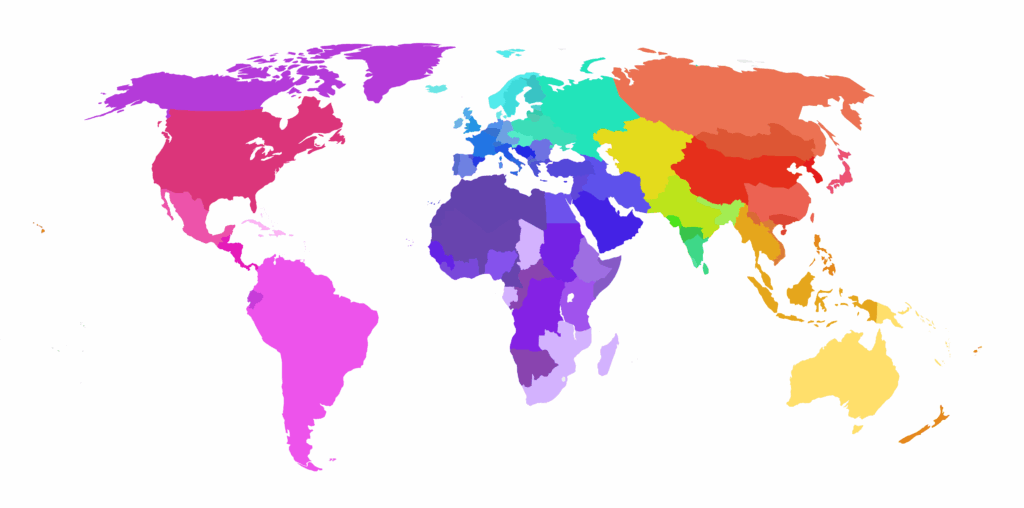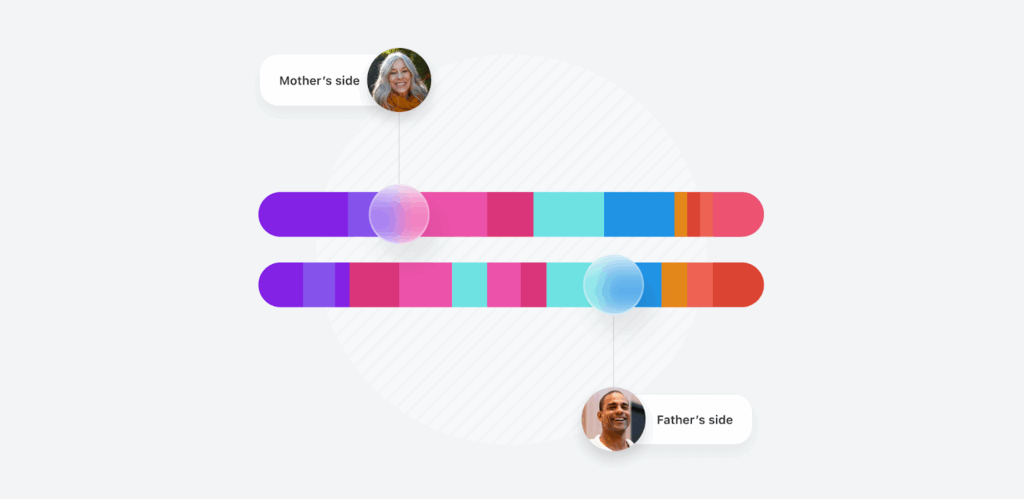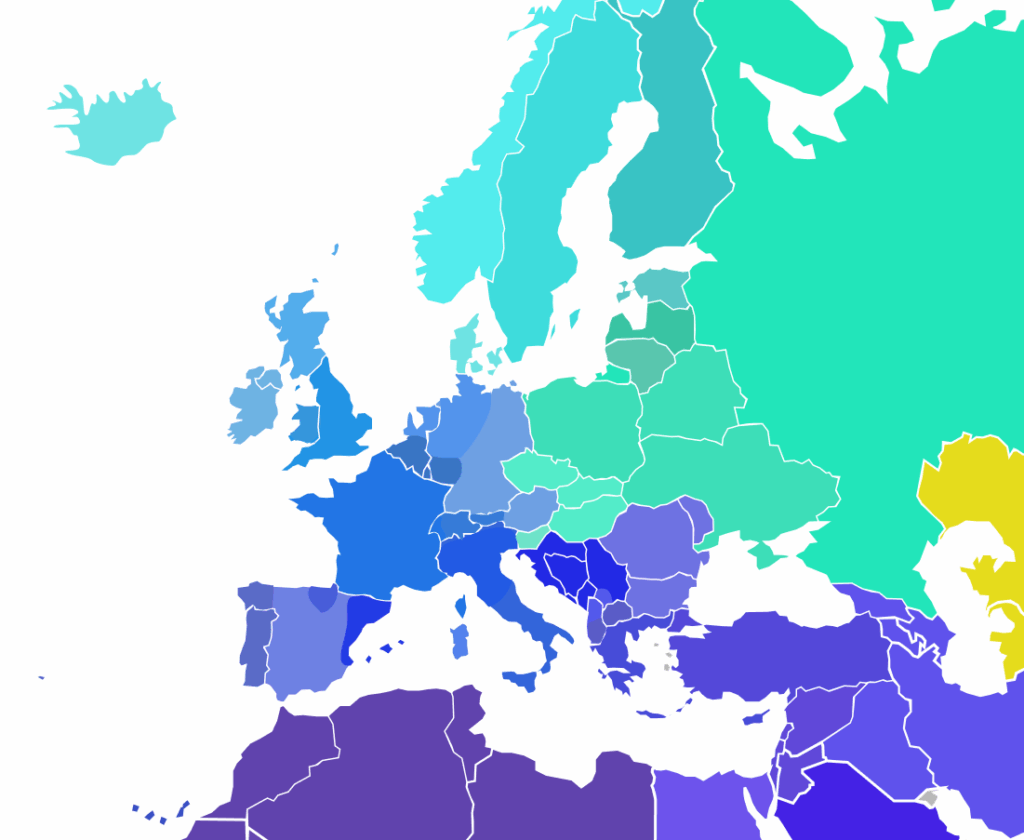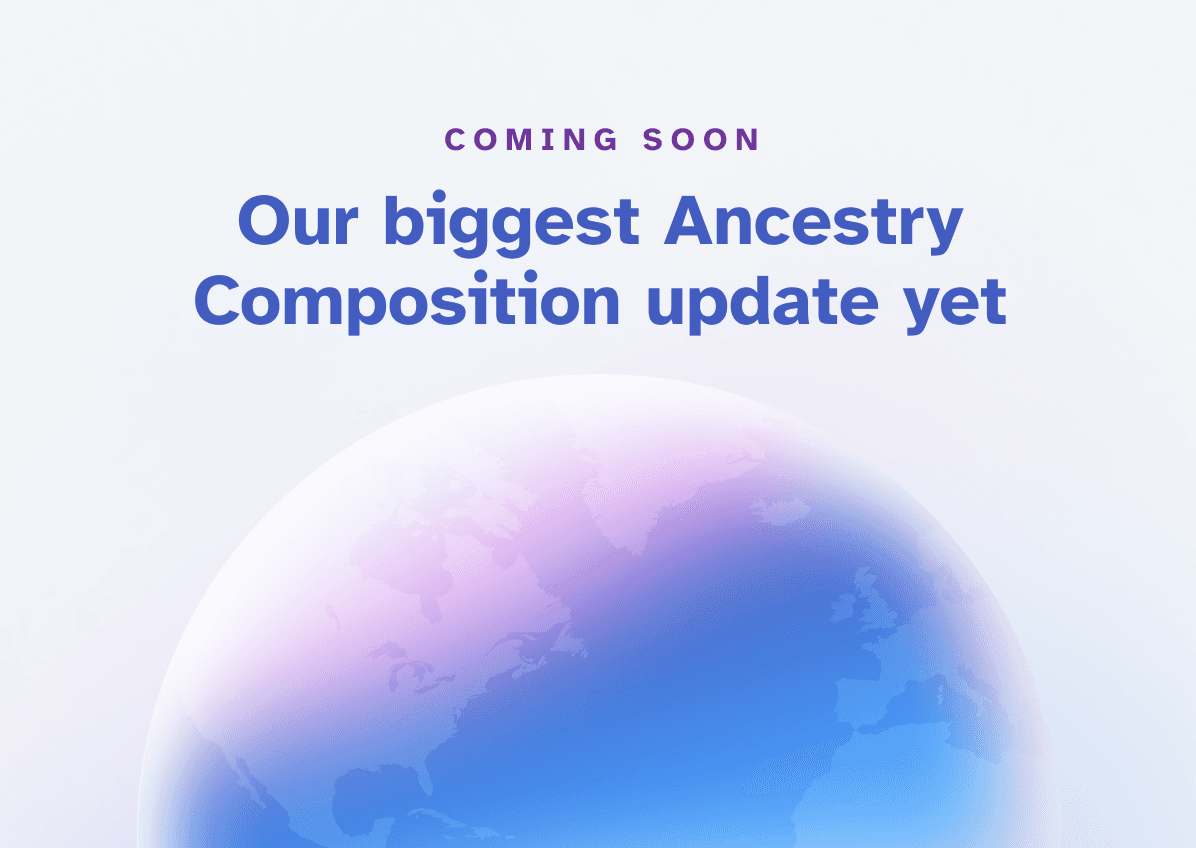This update is currently available to all eligible customers on the latest, V5, genotyping chip.
23andMe’s flagship Ancestry Composition algorithm was last updated in 2022, when three new reference populations were added in China. Since then, the 23andMe Ancestry Team has focused on improving the specificity of reference populations and updating the methods underlying this state-of-the art algorithm. The result? More specificity and accuracy in the ancestry breakdowns we provide.

The project, Version 7 of Ancestry Composition, is the most significant update to the feature ever.
Improved algorithm, expanded populations, better results
Over the last few months, we’ve been hard at work finalizing the details on this major update to your favorite report: Ancestry Composition.

Here’s what we’ve been working on:
- Better breakdowns in Europe and the Americas: Thanks mainly to consented 23andMe research participants we’ve been able to expand the number of unique populations in our reference datasets. Reference datasets are collections of DNA samples from people with deep roots in a specific part of the world. It’s what is needed to compare each piece of your DNA to in order to determine where in the world that DNA most likely came from. What this means is we’re launching with nearly four times the resolution in Europe and six new populations in the Americas. We also took the opportunity to refine reference datasets from around the world, making them more specific to each global population.
- Enhanced Accuracy: The accuracy of these new ancestry results are greatly improved by using our recently published, state-of-the-art DNA phasing method. You could think of phasing as sorting which DNA you inherited from each parent. Reducing errors in phasing means a more accurate estimate of your ancestry percentages and better DNA Painting.
- Elimination of Broadly and Unassigned DNA: We are updating our algorithm to report the most likely assignment for a given stretch of DNA rather than at a fixed confidence threshold. This will have the benefit of eliminating “Broadly” and “Unassigned” categories in the default results view. You will still be able to view your results at different confidence thresholds in the Version History section.
- Better Error Detection: We’ve upgraded our smoother to better filter out erroneous trace ancestries between two larger blocks of ancestry. See our Ancestry Composition Guide for more information about the current smoother.
- Version History: Compare your new results to your old ones in a new “Version History” section. 23andMe+ Premium™ members will also be able to access previous versions at different confidence settings.
What are the new reference populations?
- 33 new ancestry populations in Europe are coming: Albanian & Macedonian; Andalusian, Asturian & Castilian; Aragonese & Catalan; Austrian & Southern German; Basque; Belarusian, Polish & Ukrainian; Belgian, Rhinelander & Southern Dutch; Bosnian, Croatian, Montenegrin & Serbian; Bulgarian, Moldovan & Romanian; Canary Islander; Czech, Hungarian, Slovak & Southern Polish; Danish; Dutch & Northern German; English; Estonian; Finnish; French; Greek; Icelandic; Irish; Kosovar & Northern Albanian; Latvian; Lithuanian; Maltese; Northern Italian; Norwegian; Portuguese & Galician; Russian; Sardinian; Scottish; Slovenian; Southern Italian; Swedish; Swiss, Southwestern German & Western Austrian; Welsh

- Indigenous American will be broken into 6 new ancestry populations: Arctic North American, Central Andean & Amazonian, North American, Northern Andean, Southern Mesoamerican, and Western North American

Your DNA story, now clearer across time, place, and family
These updates, drawn from sharper science and richer data, power everything you use to explore your ancestry, including Ancestry Timeline, Parental Inheritance, DNA Painting, and more. This builds on the world’s most comprehensive ancestry breakdown on the market with over 4,000 regions, helping you experience the life-changing power of DNA by tracing where your ancestors lived and what they passed on to you.
Ancestry Composition, Version 7. More precision. More connection. More you.
This is a massive project for us and a chance to get back to our roots by digging deeper into yours. We’re thrilled you’re as excited as we are.
The 23andMe Ancestry Team




